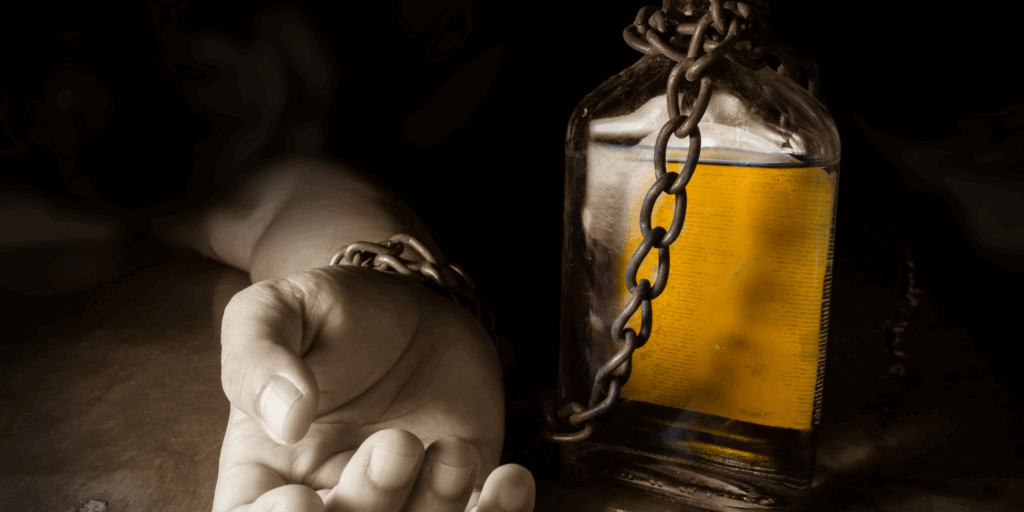Those who abuse alcohol or are alcohol dependent are much more likely to develop an alcohol-related skin rash or skin condition.
Skin reactions caused by alcohol are usually not dangerous. However, several factors can cause a person to develop a rash during alcohol use. These factors are crucial to determining whether an alcohol-related inflammation is a potential health risk.
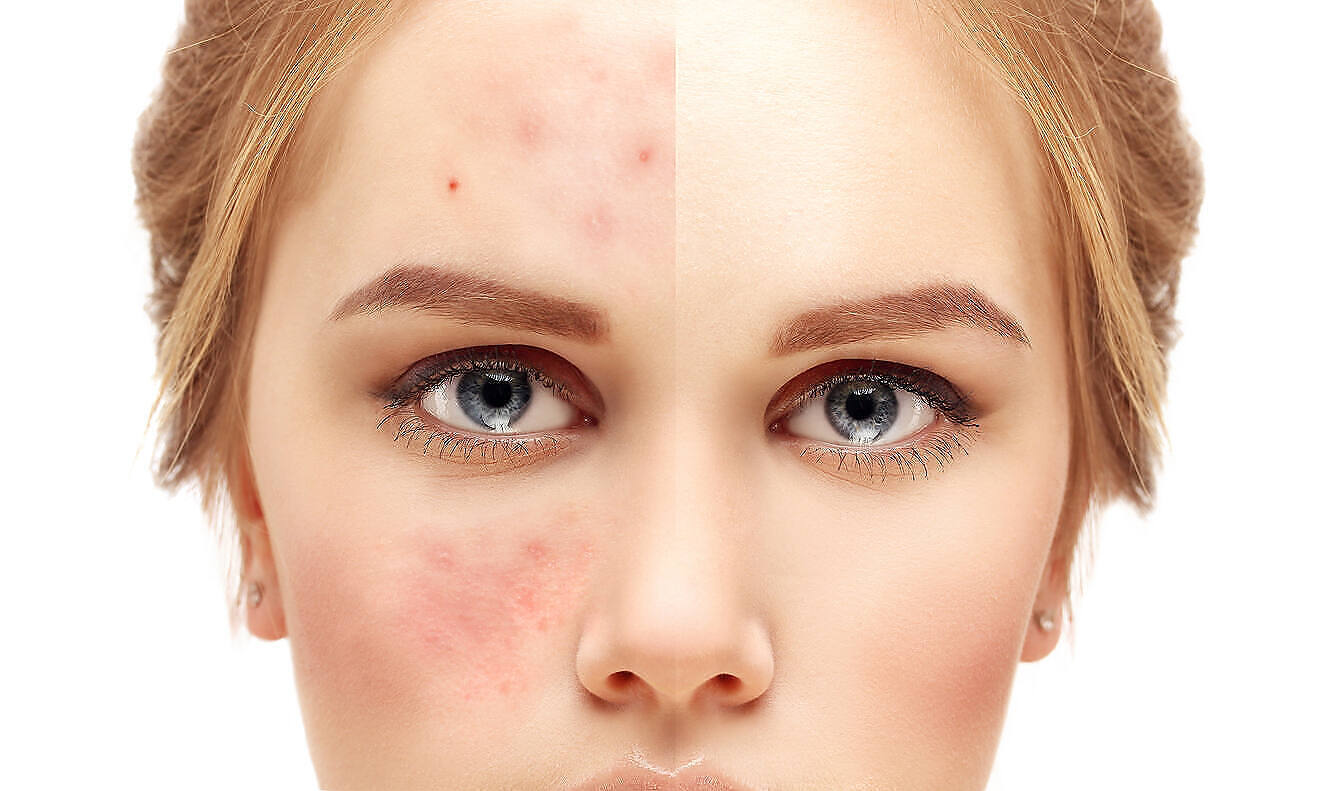
If you or a loved one suffer from a skin reaction when you drink alcohol, looking at your drinking patterns and other contributing factors can help you decide whether or not it is something you need to seek help for.
This article looks at the various skin reactions and skin conditions that can occur during alcohol use, other factors that can contribute to a rash developing during alcohol use, and which of these alcohol-related skin reactions are severe causes for concern.
Alcohol consumption can sometimes lead to skin reactions like:
- Skin redness
- Rashes
- Itching
- Skin flushing
Causes of alcohol rash skin conditions
Abusing alcohol and drinking excessively can affect the appearance of your skin in many ways, and not in a good way!
Skin conditions that can be triggered or worsened as a result of excessive alcohol use include:
- Acne
- Hives
- Rashes
- Psoriasis
- Dermatitis
- Eczema
- Red spots on the skin after drinking alcohol
- Spider veins
- Bacterial skin infections
- Fungal skin infections
- Premature ageing of the skin
- Hyperpigmentation
- Generalised pruritus
While skin conditions can be caused by other factors such as genetics, environment, and food intolerances, alcohol’s toxins have been shown to destroy good bacteria and adversely affect many bodily functions essential for healthy skin.
Causes of alcohol-related skin reactions:
Genetics
Genetics can affect how the body processes alcohol. Facial flushing after drinking alcohol is particularly common in people with East Asian ancestry.
Alcohol and interactions with medications
Many medications do not mix well with alcohol and can cause adverse effects, including skin reactions and facial flushing. Metronidazole is a commonly prescribed antibiotic that can cause unpleasant side effects when mixed with alcohol, including skin reactions, facial flushing, stomach pain, vomiting and diarrhoea.
Disulfiram is a medication prescribed to support abstinence from alcohol use in those with an alcohol use disorder. Mixing even a tiny amount of alcohol with Disulfiram is dangerous and can cause extreme vomiting, diarrhoea, stomach pain, sweating, dizziness and skin rashes.
Alcohols ingredients
Aside from ethanol, different alcoholic drinks contain many other ingredients, impurities and preservatives. If a person is allergic to or intolerant of an ingredient in a specific type of alcohol, they will experience an allergy-type reaction that includes skin flushing and rashes. If you know you have an allergy or an intolerance to a specific ingredient, always check the ingredients within alcohol before consuming.
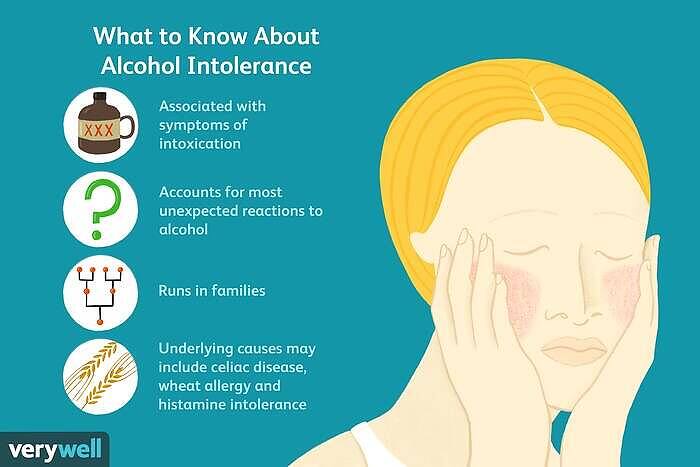
Alcohol and skin flushing
Some people experience temporary flushing of the skin when they drink alcohol. This usually happens in the face but can also spread to the neck and chest. This is generally not a problem unless it frequently occurs, which can be a sign of alcohol abuse.
Flushing of the skin when a person drinks alcohol is caused by a chemical by-product called Acetaldehyde. Acetaldehyde is produced as the body breaks down alcohol and is thought to stimulate the release of histamines, which in turn causes facial flushing.
Transient flushing is usually due to a person’s biological makeup and is not a cause for concern. The redness will usually fade as alcohol leaves the body.
Alcohol can also increase a person’s heart rate, body temperature and blood pressure, especially when abused. This, in turn, can cause facial flushing by enlarging the blood vessels in the face.
You are experiencing a ‘red face’ when drinking is generally not a problem unless it remains when you are not consuming alcohol or is accompanied by a racing heart.
A persistently red face is one of the early signs of alcohol abuse and is caused by constantly enlarged blood vessels in the face and broken capillaries. Up close, you can see the presence of thin red capillaries underneath the skin’s surface. This condition is known as Telangiectasia and can be caused by factors other than alcohol. However, if you suffer from Telangiectasia or persistent flushing, you may want to evaluate your alcohol consumption to ensure drinking is within safe limits.
Alcohol and Psoriasis
Excessive alcohol consumption can cause the development of a new case of Psoriasis or cause the worsening of an existing Psoriasis condition.
Psoriasis can develop at any point in a person’s life and affects different body parts, including arms, torso, scalp, face, genitals and fingers.
Psoriasis is particularly prominent on the hands and fingers.
Those with alcohol-related Psoriasis are also more complex to treat, as many effective medications prescribed to treat topical-resistant Psoriasis cannot be safely taken with alcohol.
It has also been found that people who develop Psoriasis in response to a high alcohol intake are also more prone to depression.
Alcohol and Eczema
Alcohol can cause ‘flare-ups’ of an existing eczema condition. Alcohol dehydrates the body and suppresses the immune system for several hours after use. This alone can be enough to trigger a flare-up of eczema.
Eczema presents as very itchy, red and inflamed discs or patterns of dehydrated skin and can affect anyone at any point in their life. However, it has been found that males suffering from chronic alcoholism are more prone to developing alcohol-related eczema.
Discoid eczema, which presents in raised round discs of intensely itchy skin, is often associated with abnormal liver function resulting from alcohol abuse.
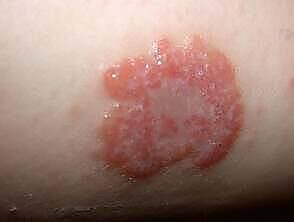
Alcohol skin rash pictures – Discoid eczema can be caused or worsened by alcoholism and impaired liver function.
Immunosuppressant medications generally prescribed for treatment-resistant eczemas, such as Methotrexate, increase the risk of liver damage. When immunosuppressant medications are combined with alcohol, the risk of sustaining alcohol-related liver damage is vastly increased.
Chronic alcohol use also prevents the absorption of essential vitamins, including B and C. These vitamins are necessary for skin health and the immune system. Not getting enough vitamin C and B vitamins would worsen any existing skin condition and contribute to developing a new one.
Alcohol and Rosacea
Researchers also found that the risk of developing Rosacea increased with the amount of alcohol consumed. Women who drank white wine or spirits were at higher risk of developing Rosacea.
Whilst drinking excessively can increase your risk of developing the facial skin condition Rosacea, it is essential to note that not all sufferers of Rosacea drink or drink to excess.
Skin rash indicating liver damage
Alcohol rash liver damage can be sustained through prolonged and heavy drinking as the liver suffers injury through repeated exposure to alcohol’s toxins.
If you drink heavily and develop any of the following symptoms, please see your doctor immediately and get help to stop drinking.
Skin reactions that are signs of liver damage:
- Redness
- Severe itching in one particular spot
- Developing ‘spider veins’
- Brown patches – hyperpigmentation
- Patches of dehydrated skin
These symptoms may also be accompanied by yellowing skin, the whites of the eyes, and abdominal pain and swelling.
Ignoring the signs of liver damage can be fatal. You must seek medical and professional help if you think your liver may be damaged due to drinking.
Pictures of alcoholic skin rash
If you are experiencing a skin reaction to alcohol, you may be interested to know what kind of skin reaction it is. The following images are typical skin conditions that can be triggered or worsened by excessive alcohol use.
A doctor should see any rash when you drink alcohol to gain a correct diagnosis and treatment.
Alcohol can cause some people to experience hives – red, itchy, inflamed bumps on the skin. This type of skin reaction is more associated with alcohol intolerance.
Picture of alcohol-related Psoriasis rash – When abused or used excessively, alcohol can increase the likelihood of developing Psoriasis. It can also make an existing condition worse.
Alcohol abuse, alcohol dependence and alcohol addiction can lead to liver cirrhosis. As your liver cannot process alcohol’s toxins effectively, this will show in your skin. Your skin may become spotty, bumpy, and itchy; it may also turn yellow due to liver damage. Liver cirrhosis cannot be cured or reversed; it can only be prevented from worsening by giving up alcohol.
Picture of Spider veins’ – Spider angiomas and other Telangiectasias – Excessive alcohol abuse can cause spider veins to develop. This is a warning sign that your liver is not coping, and you should seek immediate help to stop drinking.
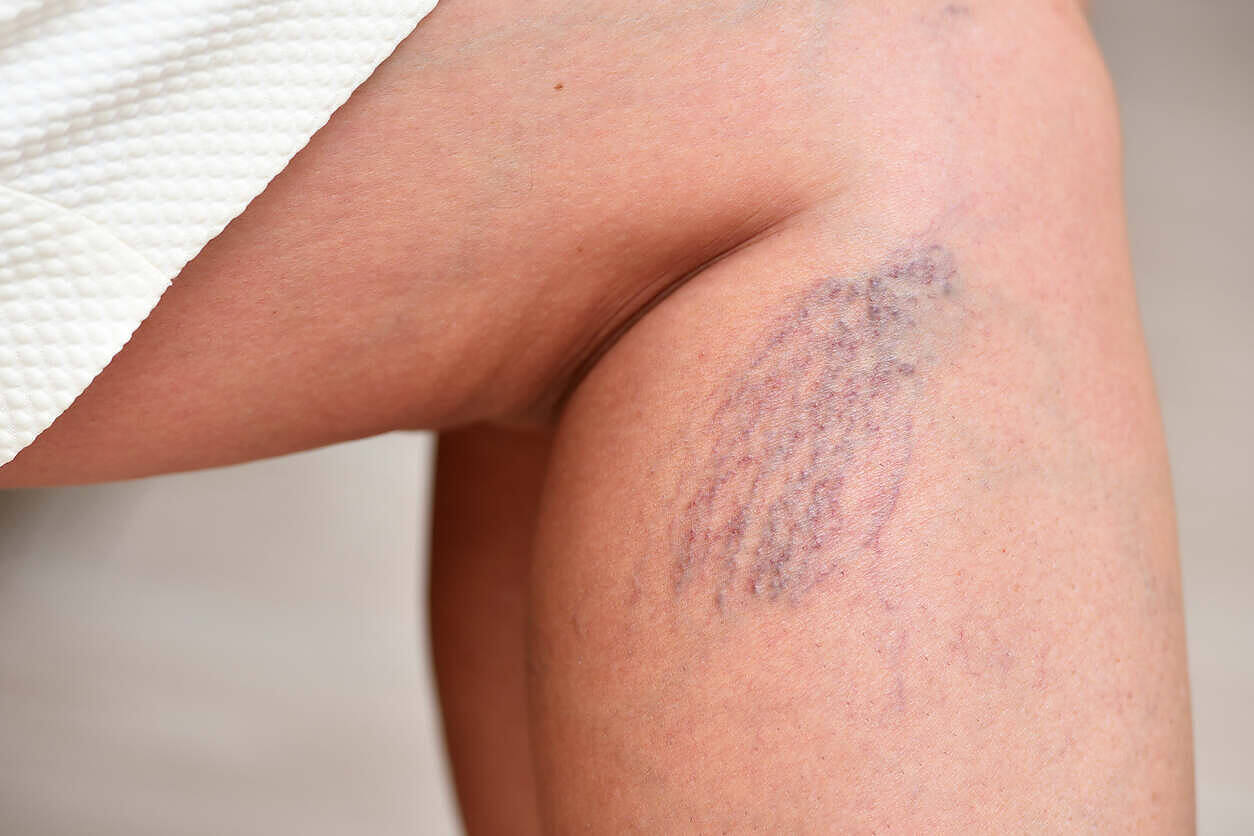
Picture of alcohol-related Rosacea – Excessive alcohol use can cause a skin condition characterised by redness and broken capillaries on the face. It can also cause an existing Rosacea condition to worsen.
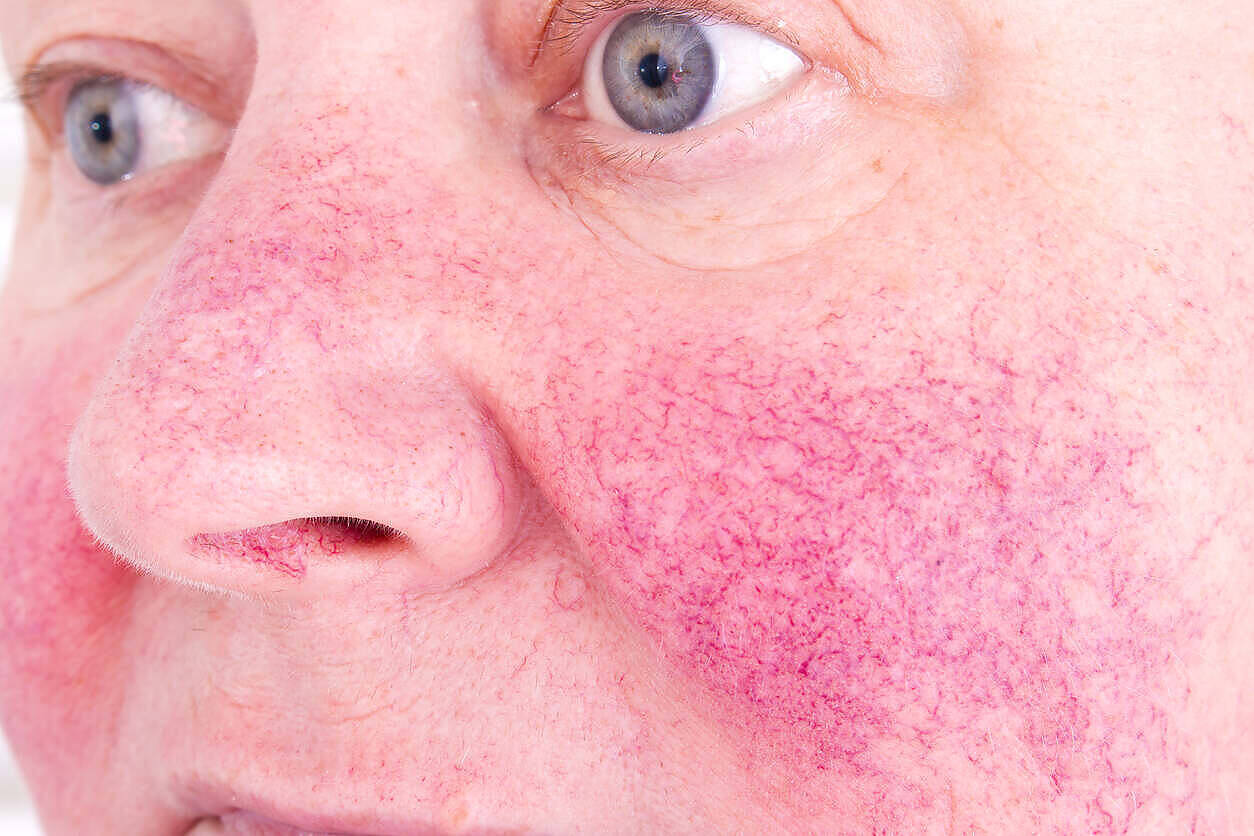
Picture of Liver Palms – Redness and itchiness of the palms of the hands and soles of the feet can indicate alcohol-related liver damage or gallbladder problems. If you suffer from this and drink heavily, you should seek immediate help to stop drinking and consult your doctor.
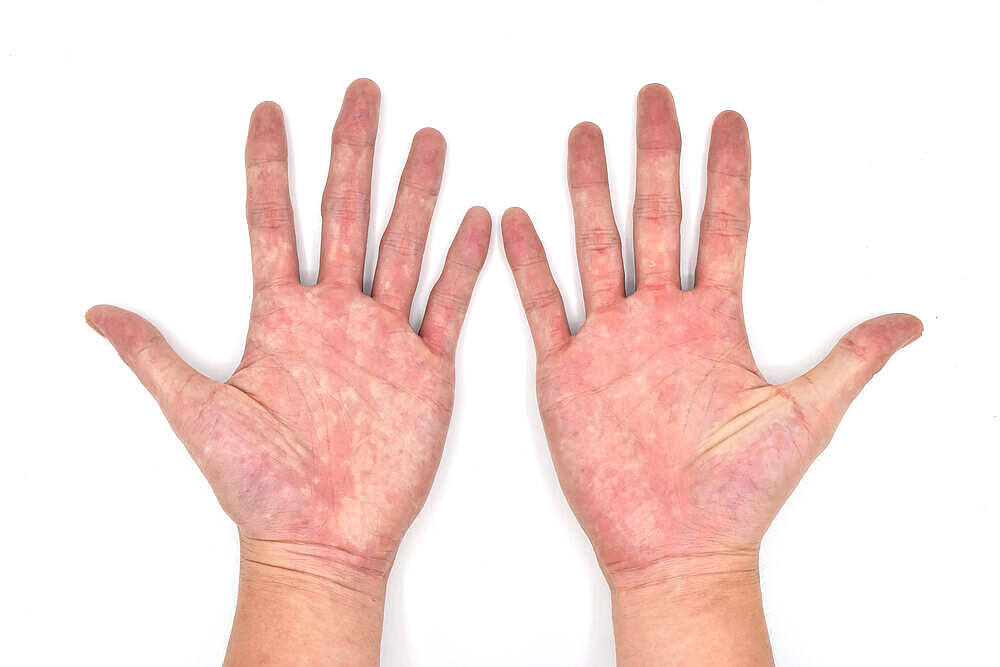
Picture of alcohol-related Eczema – Excessive drinking can trigger the onset of eczema. It can also trigger eczema flare-ups and make an existing eczema condition worse and more complex to treat.
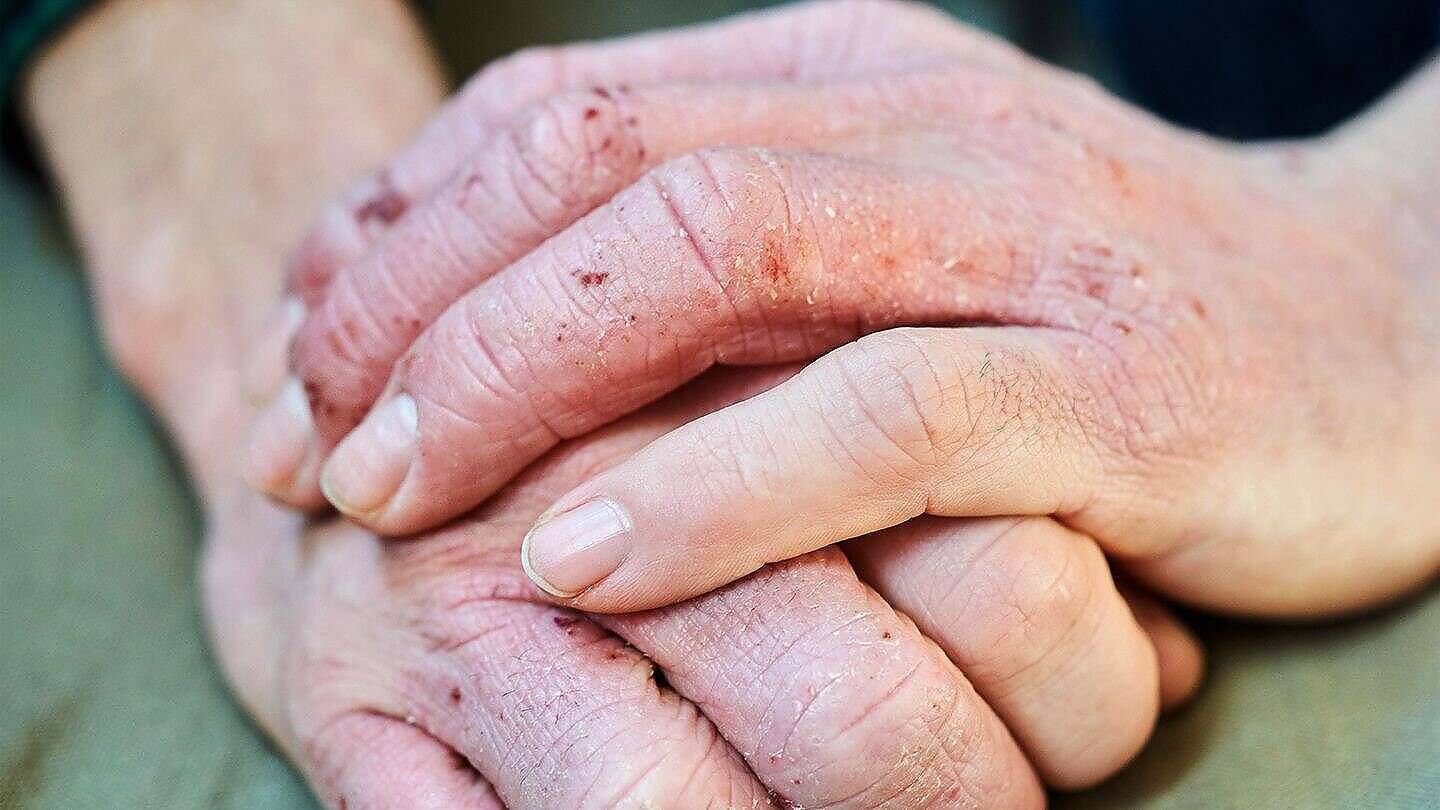
Alcohol and skin cancer
The Cancer Prevention Committee of the American Society of Clinical Oncology has recommended minimising drinking alcohol, which is thought to be a “modifiable risk factor for cancer”. Alcohol is estimated to be responsible for 3.5% of all cancer deaths in the United States.
Whilst it is recommended to keep within the safe drinking guidelines to keep the risks of skin cancer to a minimum, there have been varying results from the mountains of scientific research conducted over the years.
One particular study on alcohol and cancer found a 20% increase in skin melanoma in drinkers (compared to those who drank occasionally or not at all). The same study showed that for those who consumed the equivalent of 5 or more beers a day, there was a 55% increase in the risk of developing skin cancer.
With these kinds of statistics and Cancer Research UK estimates that as many as 1 in every two people will develop cancer during their lifetime, is it worth adding a potential risk?!
When to see a doctor about a rash from drinking alcohol
Suffering from a rash from drinking alcohol is a cause for concern and is not something you should ignore. Likewise, if you repeatedly experience rashes that come and go with consuming alcohol, this is also something to get checked out medically.
Suffering from an alcohol use disorder and a worsening skin condition could indicate that your liver isn’t coping. If this describes you or someone you love, we urge you to seek help for your drinking and see your doctor.
If you have concerns regarding your drinking and need professional help, call Detox Plus UK today for a free alcohol treatment assessment and expert advice.
Alcohol rashes can be mostly harmless. On the other hand, they can be a visual indicator of something more sinister. It is always recommended to speak to a medical professional.
Resources
- What is Telangiectasia?
- Acute alcohol sensitivity. (2018).
- Alcohol and Cancer: A statement of the American Society of Clinical Oncology
- Is there a link between alcohol and cancer?
- Alcohol intake and treatment responsiveness of Psoriasis: a prospective study.Gupta M, Schork N, Gupta A, et al. J Am Acad Dermatol 1993;28:730-2.
- Spider Angiomas in Patients with Liver Cirrhosis: Role of Alcoholism and Impaired Liver Function Li CP, Lee FY, Hwang SJ.. Scand J Gastroenterol 1999; 5: 520-523
- The effects of alcohol and drug abuse on the skin – Clinics in Dermatology 2010; Liu SW, Lien MH, Fenske NA. 28: 391–399.
- Does drinking cause Rosacea?
- Cutaneous effects of alcohol
- Asian Flushing – Genetic and Sociocultural factors of alcohol
- Metronidazole – information leaflet
- Disulfiram –
- Hepatitis C. (2017).

